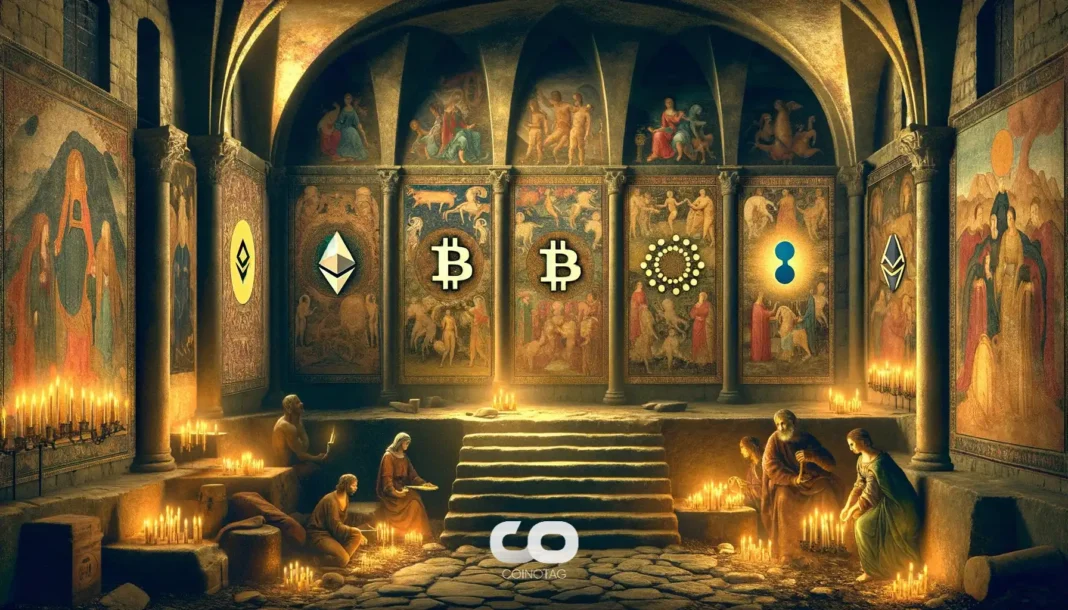- The world of decentralized finance (DeFi) continues to evolve, introducing innovative methods like liquid staking and restaking that aim to maximize returns on digital assets.
- These new techniques enhance the utility and profitability of staked assets, driving further development within the DeFi space.
- “Sumer.money seeks to revolutionize the DeFi ecosystem by offering tools that enhance capital efficiency and yield potential,” notes a spokesperson.
Explore the latest advancements in DeFi with a focus on liquid staking and restaking, and understand how platforms like Sumer are driving yield maximization.
Understanding Liquid Staking
Liquid staking allows DeFi users to keep their digital assets staked while still having access to their value. Unlike traditional staking, where assets are locked up, liquid staking offers flexibility through specialized providers.
Upon staking, users receive a token that represents their staked assets along with a portion of the rewards. This token can then be traded or used as collateral in various DeFi activities such as lending, borrowing, or providing liquidity. This enables users to continue earning staking rewards while leveraging their assets for other financial purposes.
With these tokens serving as collateral, users can enhance their yield farming strategies or secure loans without liquidating their initial assets. This flexibility makes liquid staking a preferred method for DeFi investors aiming to optimize returns and asset utilization.
The Concept of Restaking and Liquid Restaking Tokens (LRTs)
Restaking builds on the concept of liquid staking by allowing users to reposition their staked assets and liquid staking tokens to earn additional rewards. This means users can support third-party protocols with their staked assets and receive extra returns on top of their original staking rewards.
By restaking, users provide additional security to the network or offer other services while receiving extra incentives. Specialized protocols issue liquid restaking tokens to signify these restaked assets, which, like LSTs, can be used in various DeFi activities.
This dual-layered approach ensures maximum utilization of assets, allowing users to earn without unstaking. This continuous cycle of staking and restaking enhances returns and capital efficiency, fully utilizing every token.
The Sumer Approach to Yield Maximization
Sumer.money, a DeFi platform, leverages liquid staking and restaking across multiple blockchains to optimize yields. By creating and managing synthetic assets, users can maximize returns on their digital investments.
Sumer’s advanced risk engine is central to its strategy, analyzing correlations and market conditions to manage assets effectively. This dynamic approach ensures assets are employed efficiently, minimizing risk while maximizing returns.
Sumer facilitates the creation of synthetic assets like USD, ETH, and BTC using various tokens and stablecoins. This allows users to unlock value without selling or unstaking their assets, providing flexibility for other financial endeavors.
By locking assets and creating liquidity simultaneously, Sumer aims to enhance DeFi market efficiency. Staked assets not only generate rewards but also serve as collateral for loans and borrowing, addressing liquidity issues and fostering financial system integration.
Sumer helps users maximize returns through its risk engine, ensuring safe and efficient capital deployment, making it a reliable choice in the dynamic DeFi market.
Comparing Liquid Staking and Liquid Restaking
The primary goal of liquid staking is to unlock the liquidity of staked assets, allowing users to use them as collateral while earning staking rewards. Liquid restaking, on the other hand, focuses on repurposing staked assets and liquid staking tokens for additional returns by supporting third-party protocols.
The tokens involved in each system also differ. In liquid staking, users receive liquid staking tokens as receipts for their staked assets, which can be traded or used as collateral. In liquid restaking, liquid restaking tokens represent ownership of restaked assets and convey further benefits from the restaking process.
Despite their differences, both methods aim to optimize yield opportunities in DeFi. Liquid staking does so by enhancing liquidity, while liquid restaking offers additional protocol support and rewards.
Optimizing Yields with LSTs and LRTs
Liquid staking and liquid restaking tokens are crucial for yield optimization in DeFi. They enable users to increase returns by adding more layers of staking and unlocking the liquidity of staked assets. This focus on enhanced returns is vital in DeFi, where maximizing asset productivity is the primary goal.
Beyond Ethereum, other blockchains offer various staking and liquidity rewards. Networks like Polkadot, Solana, and Binance Smart Chain provide lucrative staking incentives, allowing investors to diversify their assets and maximize earnings by using these platforms.
However, DeFi is highly dynamic, and yield opportunities can quickly change. High-interest rates often attract significant capital inflow, reducing returns as more participants join. The landscape constantly evolves with new protocols and innovations, requiring users to stay alert and flexible to maintain optimal yields.
LSTs and LRTs offer the adaptability needed in this environment. By transitioning assets through different staking and restaking phases, users can respond to market shifts, ensuring they maximize returns in a rapidly changing landscape.
Conclusion
In the DeFi ecosystem, liquid staking and restaking provide distinct yet complementary methods for maximizing output. While liquid staking enhances liquidity and collateral use, restaking offers additional security and rewards. The integration of these strategies with LSTs and LRTs exemplifies DeFi’s innovative potential for yield optimization.
Investors should explore and capitalize on these opportunities to maximize their returns and fully benefit from the evolving strategies and technologies within the DeFi ecosystem.






